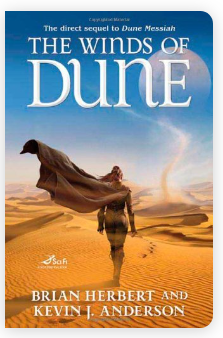Here you will find things about fitness and nutrition, mainly (but not exclusively) in relation to the Beachbody programs like P90x and Insanity. And, I will start adding reviews for Books, DVDs and Blu-Rays, and other products. All views and opinions on this blog are my own.
Welcome
Welcome to my ever-evolving blog. It started out as a blog on Beachbody workouts and products, mainly when I was a Beachbody coach. I no longer coach, not because I don't believe in Beachbody's programs (I subscribe to Beachbody on Demand and use their workouts every day), I am just not a salesperson and hated that aspect of it. I am more than willing to answer questions about my experiences with their products and the various workouts, and I feel freer to do so without the appearance of giving a biased review of something.
I have also started adding reviews for various things I have purchased like movies, books, CDs, and other products. This was brought about by a fight with Amazon in which all of my reviews were removed over a completely bullshit allegation that I posted a review that violated their terms of service. After going back and forth with the morons in the community-reviews department (even after they admitted that my posts did not violate their guidelines) they restored my account (which took them six months to do), but I have been posting my reviews on my blog to have them preserved in case something like that happens again. And here, I will post uncensored reviews so I will swear from time to time and post reviews that may be longer than Amazon's character limit. Everything I post here on any topic or product is my personal opinion, and I take no compensation for any product reviews I post. I am a member of Amazon's vine program and because I get those products for free, I keep those reviews on Amazon only, but everything I have purchased with my own money, whether from Amazon or some other store/website/outlet, I will post here.
I also plan to do some longer blog posts on various topics, such as how to learn physics, how to get through calculus, and longer reviews of workout programs as I do them. Basically, whatever strikes me as interesting at the time. As you can see if you navigate around the blog, I had many years in between postings. During that time I was going back to school to get an engineering degree, and learning material that I avoided my first time through college was a different experience and one that gave me a lot of insight into how to do well in those classes, which I will try to impart here for those who are looking to get a science or engineering degree.
Monday, January 5, 2026
Book Review: Sunrise on the Reaping
Wednesday, December 31, 2025
Book Review: Shadow of Doubt (Scot Harvath Series #23)
Wednesday, December 24, 2025
Book Review: Star Wars: The Secrets of the Clone Troopers
Sunday, December 21, 2025
Book Review: Never Flinch
Wednesday, November 26, 2025
Book Review: Star Wars: Master of Evil
Saturday, November 22, 2025
Book Review: The Road to Dune
Wednesday, November 12, 2025
Book Review: Star Wars: Mace Windu: The Glass Abyss
Wednesday, October 22, 2025
Book Review: Sandworms of Dune (Dune #23 Chronological Order)
Saturday, September 27, 2025
Book Review: Hunters of Dune (#22 Chronological Order)
Monday, August 25, 2025
Book Review: Star Wars: Reign of the Empire: The Mask of Fear
Sunday, August 17, 2025
Book Review: The Second Great Dune Trilogy
Thursday, August 14, 2025
Book Review: Tales of Dune
Monday, August 11, 2025
Book Review: Chapterhouse Dune (Dune #21 Chronological Order, #6 Publication Order)
Tuesday, July 22, 2025
Book Review: Star Wars: The High Republic: Into the Light
Thursday, December 5, 2024
Book Review: Star Wars: Tears of the Nameless
Tuesday, November 19, 2024
Book Review: Children of Dune (Dune #18)
Saturday, October 12, 2024
Book Review: Star Wars: The High Republic: Beware the Nameless
The hardcover version of the book is moderately long, just under 325 pages. Unlike some junior novels, which tell ancillary one-off stories, this one advances the overall plot of the High-Republic era quite a bit. In this book, we learn more about the Levelers, including how they can affect non-force users. The characters in the book are mostly new, although Ram Jomaram (who has been in a few of the junior novels) does appear, and Yoda appears at the very end of the book. Because it is a junior novel, it reads very quickly. It includes a handful of comic illustrations, giving us an actual look at the Levelers, which have been described in very vague terms in the prior novels (and we learn why that is in this book). Even though it is written for a younger audience and some of the dialogue can be a bit silly, it is good enough for adults to enjoy. If you are a fan of the High Republic stories but do not get all the books, this one is worth reading.
Friday, October 4, 2024
Book Review: The Winds of Dune (Dune #17)
Wednesday, September 18, 2024
Book Review: Capture or Kill (Mitch Rapp Series #13 Chronological Order; #23 Publication Order)
Wednesday, September 11, 2024
Book Review: Holly



















